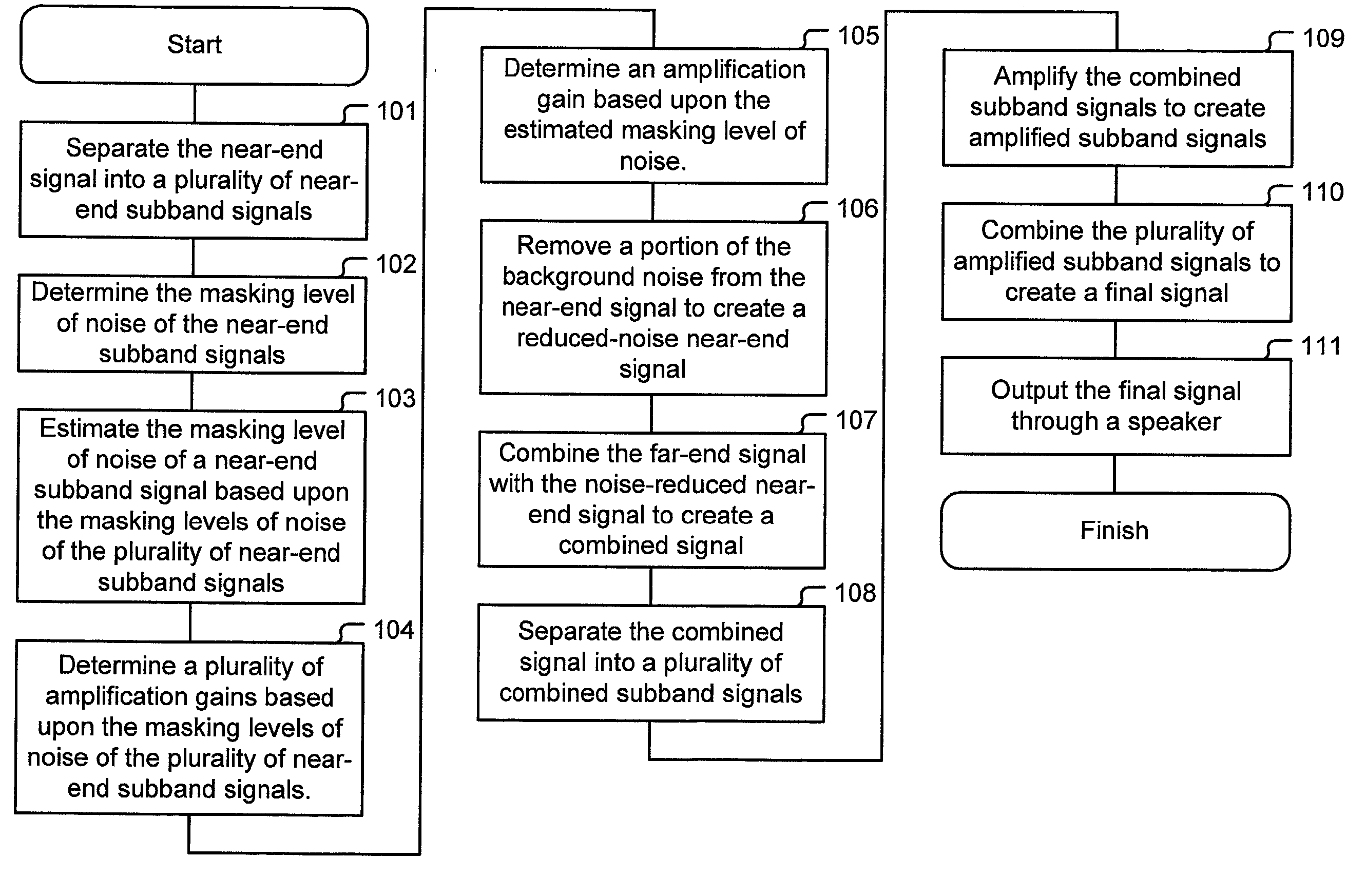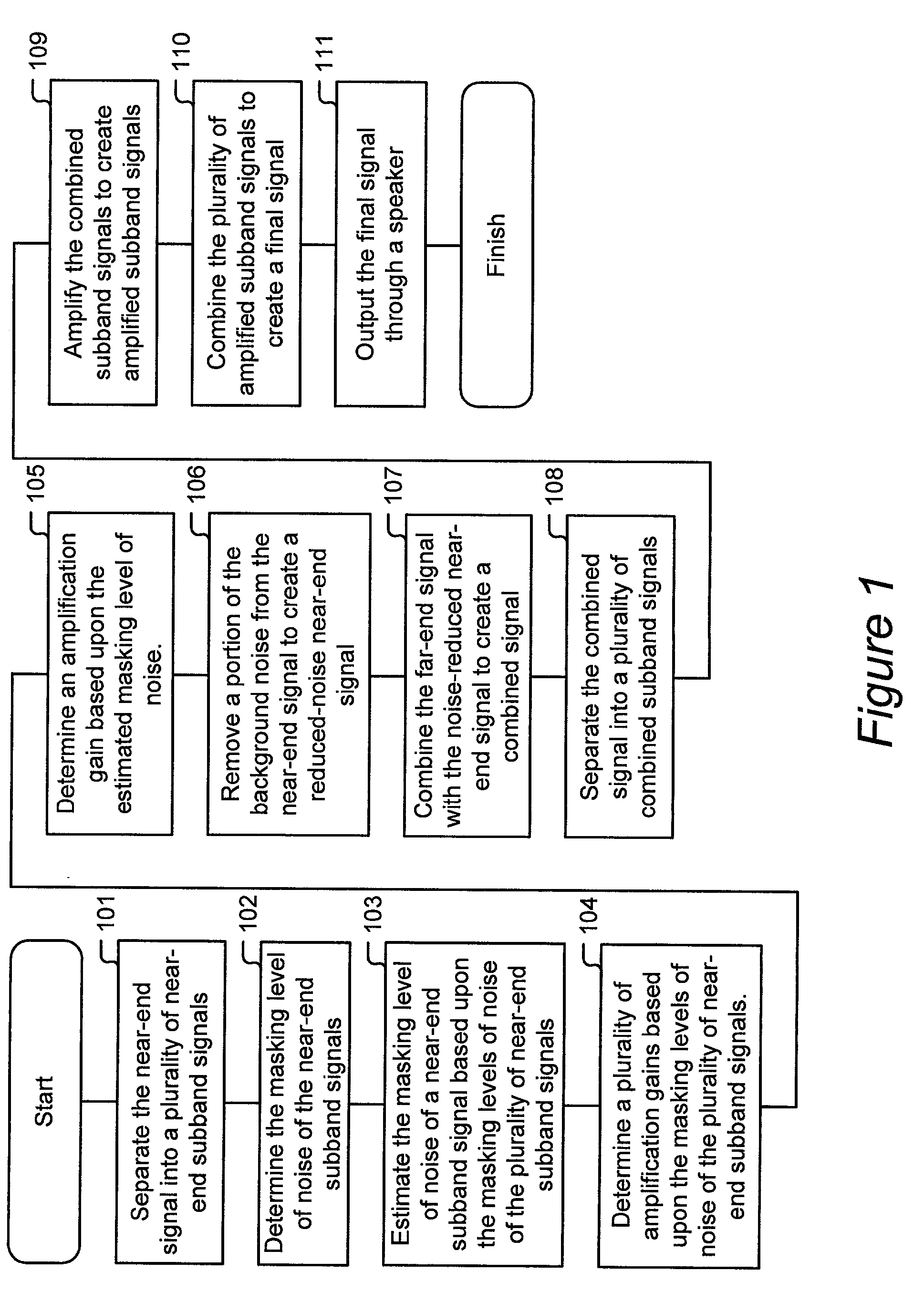Method for generating a final signal from a near-end signal and a far-end signal
a technology of near-end signal and far-end signal, which is applied in the direction of speech analysis, interconnection arrangements, instruments, etc., can solve the problems of difficult to hear the person speaking at the other end, unfavorable manual adjustment of volume control by the listener, and often unavailable control, etc., to accurately estimate the masking level of noise
- Summary
- Abstract
- Description
- Claims
- Application Information
AI Technical Summary
Benefits of technology
Problems solved by technology
Method used
Image
Examples
Embodiment Construction
[0052] In other embodiments of the invention, a user would preprogram subband amplification gains into a telephone. In one embodiment of the invention, the subband amplification gains could be programmed via the telephone keypad. In another embodiment of the invention, the subband amplification gains could be encoded in the far-end signal. In still other embodiments of the invention, the subband amplification gains could be input into the telephone via voice recognition. The subband amplification gains may be based upon the user's hearing ability and / or the anticipated background noise that is present when the telephone is typically used.
[0053] In some embodiments of the invention, the amplification gain determiner modules 308, 309, and 310 first determine subband amplification gains as discussed in Section 5.4. Next, each module retrieves a preprogrammed subband amplification gain. Then, the module provides the multiband amplifier 313 with the larger of either the determined subban...
PUM
 Login to View More
Login to View More Abstract
Description
Claims
Application Information
 Login to View More
Login to View More - R&D
- Intellectual Property
- Life Sciences
- Materials
- Tech Scout
- Unparalleled Data Quality
- Higher Quality Content
- 60% Fewer Hallucinations
Browse by: Latest US Patents, China's latest patents, Technical Efficacy Thesaurus, Application Domain, Technology Topic, Popular Technical Reports.
© 2025 PatSnap. All rights reserved.Legal|Privacy policy|Modern Slavery Act Transparency Statement|Sitemap|About US| Contact US: help@patsnap.com



